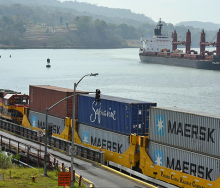The search for the Endurance – the vessel that floundered in 1915 as part of a polar exploration expedition by Sir Ernest Shackleton – was on the point of being abandoned when the ship was found on Saturday, 100 years to the day after that fateful mission’s leader was laid to rest on South Georgia island.
South African chopper pilot Buzz Bezuidenhout, who is part of the Endurance 22 search mission, yesterday told Hot 102.7 FM that they had covered roughly 80% of the search area when the elusive wreck was finally spotted, using high-tech equipment.
Found relatively close the spot where expedition photographer Frank Hurley took the last black and white stills of the Endurance before crushing ice caused her to sink on 21 November 1915, the ship’s icy grave has kept her mostly intact.
Bezuidenhout said crockery and other items were clearly visible scattered across the deck of the ship.
Popular historian and TV presenter, Dan Snow, told History Hit: “The wreck is in an astonishing state of preservation, at the absolute upper limit of what the Endurance22 team were hoping to find. The cold water temperatures mean that no wood-eating organisms live in this part of Antarctica.
“The paintwork is glistening, the nails still shine, the planks look like new.”
And if there was any doubt that the pristinely preserved three-masted barquentine is indeed what the history hunters were looking for, elation rippled through the crew when a high-resolution camera slowly glided across the stern to reveal, still in its original colours, the vessel’s name.
Said Snow: “As we watched the footage from the seabed there were amazed exclamations. After weeks of searching, and several false dawns, we had found Endurance.”
When they were so close to almost returning home disappointed, much like Shackleton’s expedition, because of worsening sub-zero temperatures, the moment the Endurance was finally found is best recollected in Snow’s own words.
“I came aboard the South African icebreaker Agulhas II in early February 2022 with the Endurance22 expedition. We left Cape Town and spent 10 days negotiating the swells and winds of the Southern Ocean.
“By 5 March, we were into our last week searching for the wreck in the Weddell Sea. The temperature was plummeting, ice was building and we could have been forced to abandon the search at any minute.
“Then the autonomous underwater vehicle (AUV) pilot and monitoring team saw something. It was big, and it had height, sitting well clear of the seabed. In a vast area of featureless seabed, it looked manmade.
“As the AUV went in for a closer look, a wall of wood appeared out of the darkness. It was Endurance’s port side. The paintwork was still intact, the planks looked like new, held in place by twinkling nails. All hell broke loose.
“I was overwhelmed by a wave of relief, of deep gratitude that we would not be going back empty-handed. That the hard work and belief of so many people would be rewarded.
“The drone was recovered and recharged. People worked fast, the deck fizzing with energy. Back into the water went the drone, every pass over the target yielding stunning images and data.
“Endurance lay on her keel, as intact as she had been in the last photos of her by expedition photographer Frank Hurley. There were smashed plates on the deck, hatchways and ladders clearly visible. The water was clear, with a visibility of 30m at least. It felt like time travel. It was overwhelming.
“As the drone was piloted around the stern of the ship, we got the view we hadn’t dared hope for: the five-pointed star, and above it, the letters spelling out Endurance, still bright gold.”
Now, with layers of time peeled back, the world waits to see how the herculean task of bringing the Endurance up to the surface from her resting place of 3 000 metres, will be done in the unforgiving environs of Antarctica.

Endurance, stuck in the ice of the Weddell Sea, 1915. Photo: Granger/Alamy Stock.













